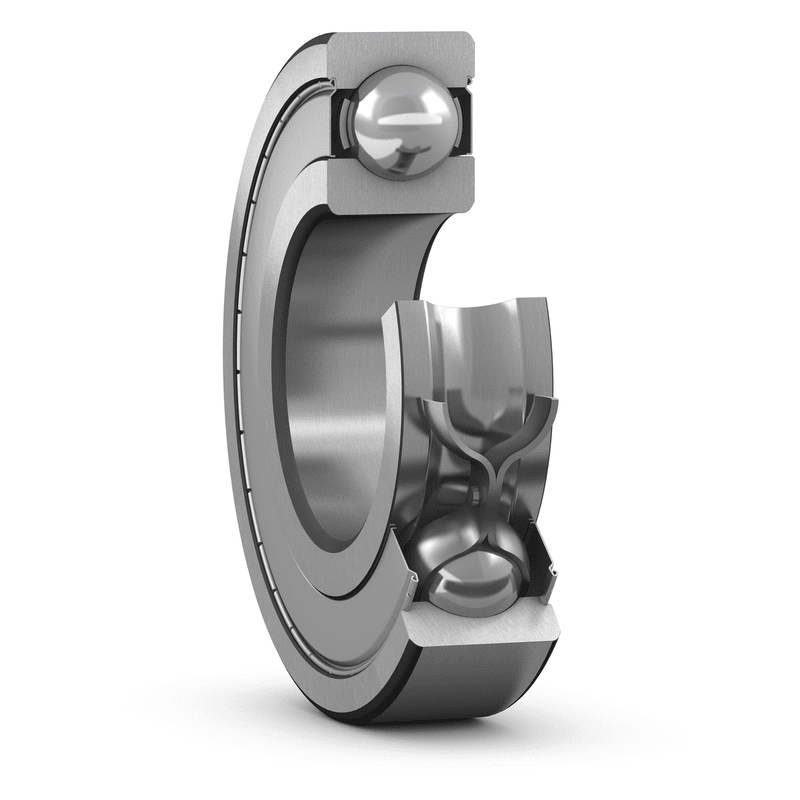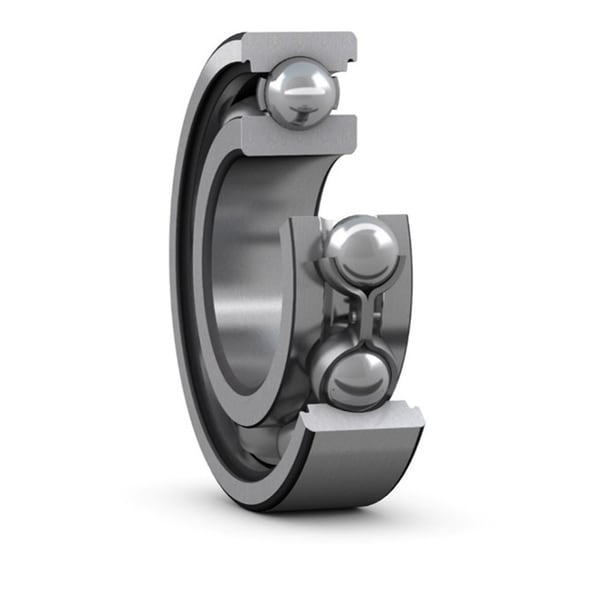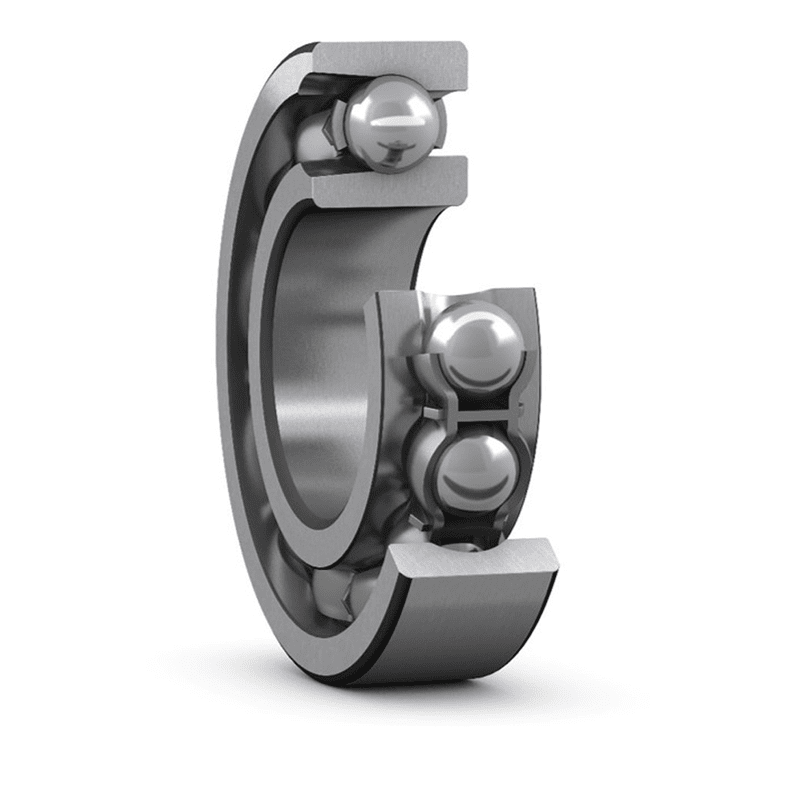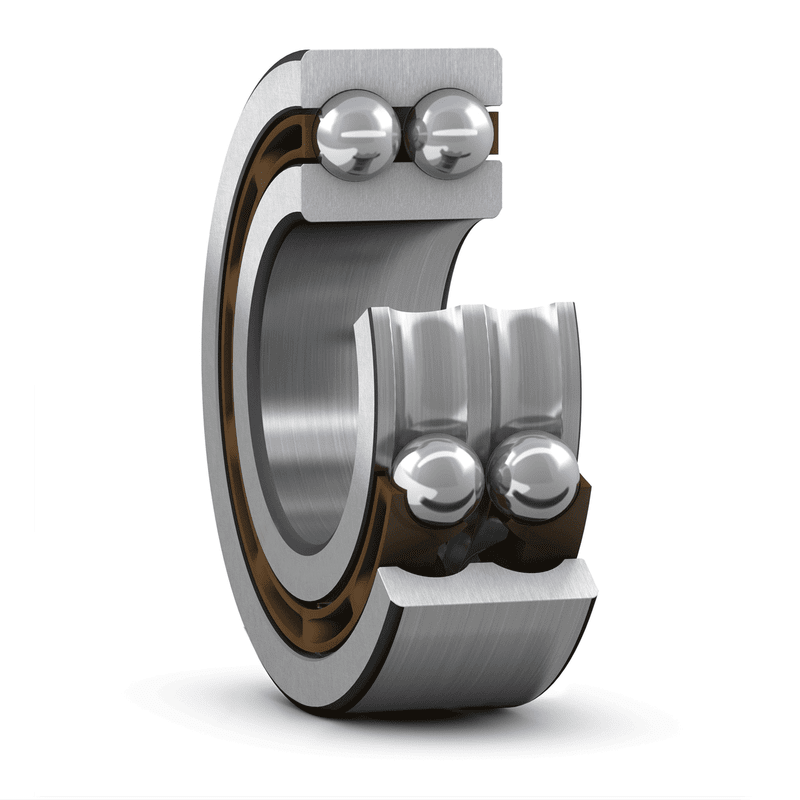Usually, a shaft is supported by two bearings in the radial and axial directions. One side of the bearing is called a fixed end bearing, which bears both radial and axial loads and plays a role in fixing the relative axial displacement between the shaft and the bearing housing. The other side is called the free end, which only bears radial loads and can move relatively axially.
Fixed end bearings must be fixed to both the shaft and the bearing housing. A more suitable bearing is a radial bearing that can withstand composite loads, such as deep groove ball bearings, self-aligning roller bearings, double row or paired angular contact ball bearings, or tapered roller bearings. Radial bearing combinations that can withstand simple radial loads, such as cylindrical roller bearings with inner and outer rings without flanges, combined with deep groove ball bearings, four point contact ball bearings, or bi-directional thrust bearings, can also be used as fixed end bearings. At this point, the second bearing provides bi-directional axial positioning, but must be installed with a certain radial distance from the bearing housing. When the length of the free end bearing changes due to thermal expansion of the shaft, there will be no compression inside the bearing. Axial displacement can occur inside the bearing or between the bearing ring and the bearing seat.
Cross fixation "refers to a bearing configuration in which each bearing is positioned unidirectionally and in opposite directions to the shaft. Imported bearings simplify the structure around them, making maintenance and inspection easier. Generally, it can withstand both radial and axial loads simultaneously. Easy to use under high and low temperature conditions. This combination is mainly used for short axes. All radial bearings that can withstand axial loads in at least one direction are suitable, including deep groove and angular contact ball bearings, tapered roller bearings, and NJ type cylindrical roller bearings. When using angular contact ball bearings or tapered roller bearings, preload must be applied in certain situations.
Bearing speed: The operating speed of imported bearings is limited by the allowable working temperature. Low friction bearings generate relatively low heat internally, making them suitable for high-speed operating conditions. Deep groove ball bearings and self-aligning ball bearings can withstand higher rotational speeds under pure radial loads, or angular contact ball bearings under combined loads, compared to other bearings. Precision angular contact ball bearings or deep groove ball bearings with ceramic (raw material: non-metallic minerals) rolling elements can even achieve higher speeds. Due to design reasons, the operating speed of thrust bearings cannot be as high as that of radial bearings.
Bearing accuracy: For bearing configurations that require high rotational accuracy and are applied to high-speed working conditions, bearings with higher accuracy than ordinary grade should be selected. The starting friction of bearings is small, and the difference in sliding friction control is also small. Standardization and normalization have been promoted internationally, with good interchangeability and the ability to be used interchangeably between different brands. We can provide a variety of high-precision bearings, including single row angular contact ball bearings, single row and double row cylindrical roller bearings, as well as unidirectional and bidirectional angular contact thrust ball bearings.

Single row deep groove ball bearings are the most widely used type of bearing. Provide closed (with sealed or dust cover) or open design. Open type be...

Stainless steel deep groove ball bearings can resist corrosion caused by moisture and other media. Provide closed (with sealed or dust cover) or open ...

A single row deep groove ball bearing with a ball loading notch has a ball loading notch on both the inner and outer rings, which is used to load more...

Double row deep groove ball bearings are very suitable for use in bearing configurations where the load-bearing capacity of single row deep groove bal...
 Copyright © 2002-2021 SKF Bearing Copyright Address:1-2F, Building 4, 1628 Lizheng Road, Lingang New Area, China (Shanghai) Pilot Free Trade Zone
Copyright © 2002-2021 SKF Bearing Copyright Address:1-2F, Building 4, 1628 Lizheng Road, Lingang New Area, China (Shanghai) Pilot Free Trade Zone